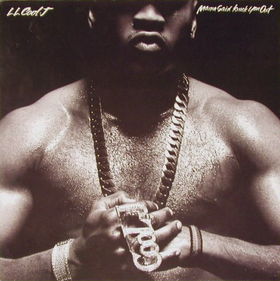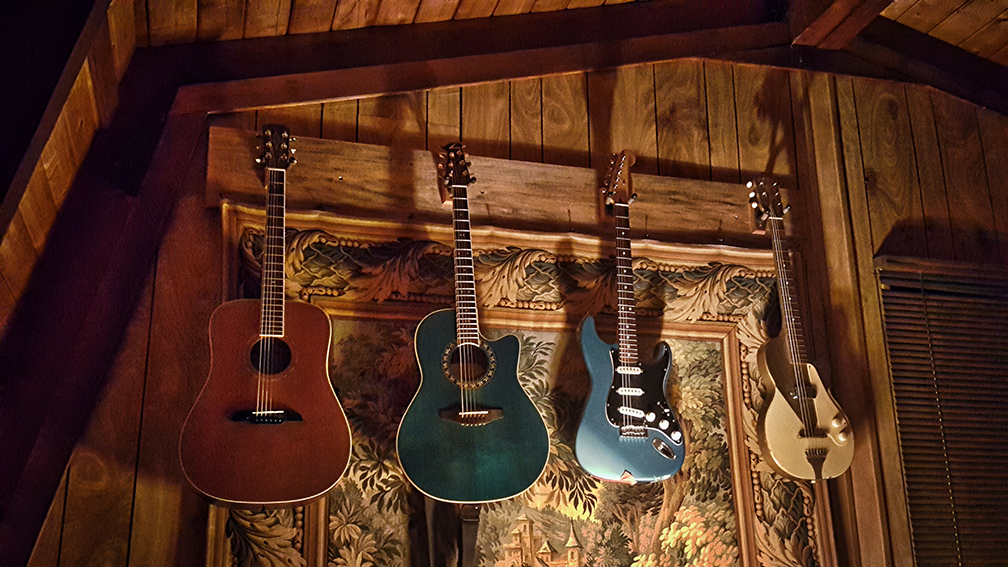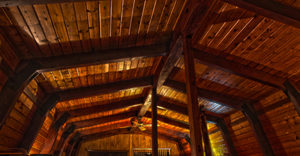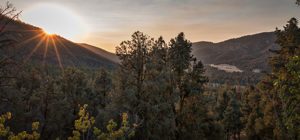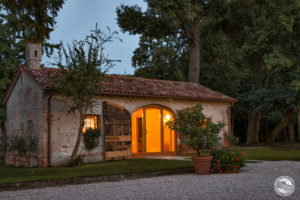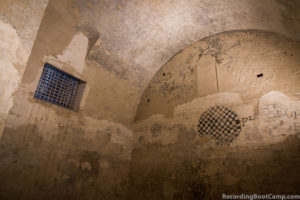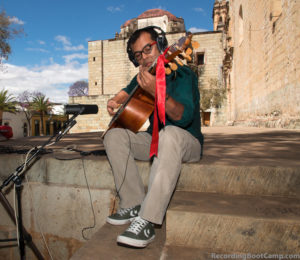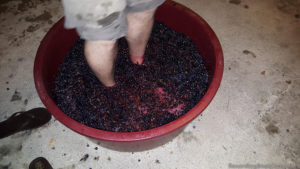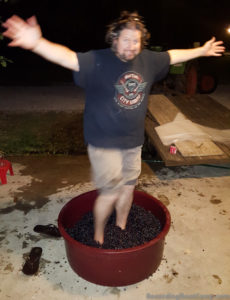I recently worked with the editors of Mix Magazine on an article about the making of the album I produced for the band GWAR, “The Blood of Gods”. It is in the December issue of the magazine. As is typical in print media, it had to be edited down a lot, so I am am posting the full article for hardcore recording geeks and fans of the band. Check out the bottom of this blog for a photo gallery from the sessions. -Ronan
_______________________________
Making The Blood of Gods
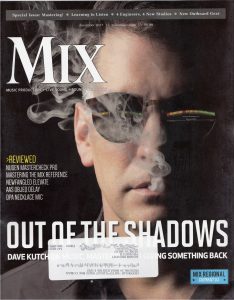 The history of Gwar has not been without its struggles, but the start of 2017 saw the band at a particularly difficult crossroads. In 2011 the band suffered the death of lead guitarist Cory Smoot, (Flattus Maximus) and in 2014 their singer Dave Brockie (Oderus Urungus) passed away. As Gwar geared up for its 14th studio album, they not only had to face many of the same creative challenges any iconic band would face well into a long career, but they were now figuring out how to do it without their long-time lead singer, who was adored by the fans and a creative focal point of the band. Many of their die-hard fans were downright angry that the band was carrying on without him. “Gwar died with Oderus” was a common sentiment on the fan sites, but Brockie had said that Gwar should go on even after all of them were dead and gone. Gwar planned to honor Dave’s wishes … and that is where I come in.
The history of Gwar has not been without its struggles, but the start of 2017 saw the band at a particularly difficult crossroads. In 2011 the band suffered the death of lead guitarist Cory Smoot, (Flattus Maximus) and in 2014 their singer Dave Brockie (Oderus Urungus) passed away. As Gwar geared up for its 14th studio album, they not only had to face many of the same creative challenges any iconic band would face well into a long career, but they were now figuring out how to do it without their long-time lead singer, who was adored by the fans and a creative focal point of the band. Many of their die-hard fans were downright angry that the band was carrying on without him. “Gwar died with Oderus” was a common sentiment on the fan sites, but Brockie had said that Gwar should go on even after all of them were dead and gone. Gwar planned to honor Dave’s wishes … and that is where I come in.
Gwar has been on a short list of artists I dreamed of producing for years. I have known them since the early years. I lived in the old milk processing plant turned art studios where Gwar was formed. My old band played shows with them on the east coast and I was even approached about being in the band a few times in the late 80s. We had spoken several times over the years about possibly working together and at the end of 2016 the planets started to align to make it happen.
The album that would become “The Blood of Gods” (Metal Blade) required the band to regroup; and as Gwar started to rebuild, they pulled from their roots to move forward. Their new lead singer, Michael Bishop (Blothar the Berserker) had been the band’s bass player (then in the role of Beefcake the Mighty), as well as a songwriter and occasional lead vocalist on several of the band’s early classic albums. There were plenty of producers that wanted to do the album, but based on what they told me, I got the gig because I was someone that was an old friend of the band and came out of the same Richmond, Virginia punk scene that spawned Gwar 30 years earlier. They said they wanted someone that was connected to where they started to work with them as they moved forward. I think it also helped that I had always worked with other extremely creative artists like King Crimson and Ulver on some of their transitional albums.
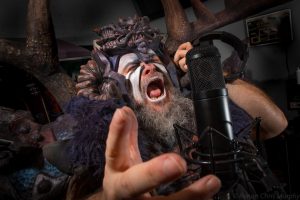 When it comes to metal production, I usually favor albums that sound like real human beings playing, rather than the more processed, quantized and synthetic style of production that has dominated metal for the last decade or so. This seemed to be a good fit with where Gwar was going with the writing for the new album. The band was tapping into their punk roots as well as a lot of classic rock from bands like Sweet, Motorhead, Celtic Frost and even old R&B. I felt a more organic feel to the album would make the music more powerful.
When it comes to metal production, I usually favor albums that sound like real human beings playing, rather than the more processed, quantized and synthetic style of production that has dominated metal for the last decade or so. This seemed to be a good fit with where Gwar was going with the writing for the new album. The band was tapping into their punk roots as well as a lot of classic rock from bands like Sweet, Motorhead, Celtic Frost and even old R&B. I felt a more organic feel to the album would make the music more powerful.
Although I produced, engineered, mixed, mastered and even co-wrote and played on some of the songs, to me, pre-production was my most important work in making this album. I flew out from California to Virginia for three intense pre-pro sessions before the recording began. The biggest challenge was solidifying where the band would go musically on this transitional album. Should they stay true to what the fans had come to expect or should they take this opportunity to move the band in new directions? Would the fans come along with the band taking big risks musically? In the end the answer was obvious: “This is Gwar; we get to do whatever the fuck we want!” In addition to more writing and rehearsals, a huge part of the pre-production was trying to solidify the direction for an album by a band that had the opportunity and musical chops to go in so many different directions.
The reason I dreamed of working with Gwar for so many years was not because of their status as an iconic band, but because I have always known how much raw talent was in the band. The costumes and the colossal stage show can often overshadow the musical talent in the band. I wanted to make an album that showcased that musicality, a music first Gwar album. Of course, it needed the shock, comedy and story telling that define Gwar, but I wanted to make an album that a kid that had never seen a photo of the band and could not speak a word of English could still be blown away by the music. As we started to define the direction of the album, we not only worked on musical direction but also on who would play what on the album. The drummer, Brad Roberts (Jizmak da Gusha), is an amazing musician who can play in lots of different styles, and every other performing member of the band can sing, play bass and guitar extremely well. This was a big advantage when we got into the recording where we could swap out players based on who had the right feel for a certain part. When we were working on a vocal harmony, bass part or guitar riff, I could choose the player who we felt worked the best for that section.
 Drum recording commenced at White Star Sound in Louisa, Virginia outside Charlottesville. White Star seemed to some like an odd choice to record a Gwar album, since it is built in an old barn set in bucolic countryside and is most known for its singer-songwriter clients, but it has a big wooden live room, a solid mic closet and a rack of API mic pres pulled out of the old console from Sunset Sound’s B-Room. Four Van Halen albums were tracked through those pres, so they should be good enough for Gwar. I knew it would work out great. All the drums were tracked through the API pres except overheads which were a pair of Shure KSM32s into A Designs Pacifica pres, a combo which has been a huge part of most of my drum sounds for the last 15 years. My hands down favorite kick drum mic for rock is the Shure Beta52, but I also like the AKG D12vr for more modern metal style kick drums sounds, so I brought both of those with me from California. Much to my surprise, neither of those made the cut for this album and I went with the AKG D112 that was already mounted inside the kick drum for live shows. The overheads, a single D112 on the kick and a single Shure SM57 on the snare, make up the majority of the drum sounds you hear on the final album.
Drum recording commenced at White Star Sound in Louisa, Virginia outside Charlottesville. White Star seemed to some like an odd choice to record a Gwar album, since it is built in an old barn set in bucolic countryside and is most known for its singer-songwriter clients, but it has a big wooden live room, a solid mic closet and a rack of API mic pres pulled out of the old console from Sunset Sound’s B-Room. Four Van Halen albums were tracked through those pres, so they should be good enough for Gwar. I knew it would work out great. All the drums were tracked through the API pres except overheads which were a pair of Shure KSM32s into A Designs Pacifica pres, a combo which has been a huge part of most of my drum sounds for the last 15 years. My hands down favorite kick drum mic for rock is the Shure Beta52, but I also like the AKG D12vr for more modern metal style kick drums sounds, so I brought both of those with me from California. Much to my surprise, neither of those made the cut for this album and I went with the AKG D112 that was already mounted inside the kick drum for live shows. The overheads, a single D112 on the kick and a single Shure SM57 on the snare, make up the majority of the drum sounds you hear on the final album.
In keeping with the vision of the album, we tried to keep as much organic and “real” as possible. While some samples made the final album to reinforce the drums in parts, the overwhelming majority of what you hear on the final album is the live acoustic drums. Additionally, we did comp different takes together, but the drum parts you hear on the final album are what was played. We did not move or quantize a single drum hit on the album. Brad Roberts is an amazing drummer and I wanted the album to be a chance for people to really hear his playing rather than something I created in Pro Tools.
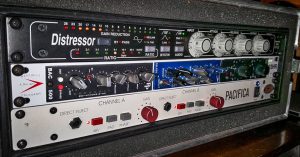 After tracking the drums and a few of the guitars at White Star we moved back to Richmond, Virginia to work on overdubs at the Slave Pit, a complex owned by Gwar that houses everything from the band rehearsal space to their graphics department, costume and props fabrication and business offices. We took over the rehearsal room and lounge and set up to record. For tracking I brought in a small rack consisting of A Designs Pacifica mic pres, an Empirical Labs Distressor, a Pete’s Place BAC 500 compressor and Electrodyne 511, and A Designs EM-PEQ EQs. With the exception of horn parts for one song (tracked by Danny T. Levin at his own studio), 100% of the overdubs outside of White Star were tracked through my A Designs Pacifica mic pres.
After tracking the drums and a few of the guitars at White Star we moved back to Richmond, Virginia to work on overdubs at the Slave Pit, a complex owned by Gwar that houses everything from the band rehearsal space to their graphics department, costume and props fabrication and business offices. We took over the rehearsal room and lounge and set up to record. For tracking I brought in a small rack consisting of A Designs Pacifica mic pres, an Empirical Labs Distressor, a Pete’s Place BAC 500 compressor and Electrodyne 511, and A Designs EM-PEQ EQs. With the exception of horn parts for one song (tracked by Danny T. Levin at his own studio), 100% of the overdubs outside of White Star were tracked through my A Designs Pacifica mic pres.
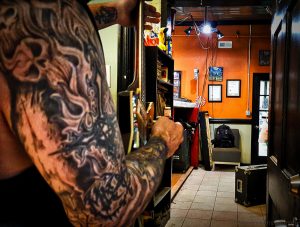 When it came to tracking the guitars, I wanted to show off the guitar players. A lot of modern metal albums have guitar sounds that smear and get lost inside big drums (samples), but we spent a lot of time working on the guitar riffs, and I wanted them to be big and in your face, while still keeping the drums and everything big and present. I did this by taking a minimal approach to the guitars. Except for special effect, the guitars are not layered. It is mostly two guitars hard panned left and right. We also spent a lot of time working on the tones and scaling back the amount of distortion. A lot of people do not realize that one of the best tricks for making guitars big and powerful is to scale back the amount of distortion. This maintains a lot of percussive punch in the guitars. One of the guitarists remarked several times how surprised he was by how clean a tone I went for on some of the heaviest songs and how powerful the end result was. About 5% of the guitars were recorded through a Fractal Ax-FX where guitarist Mike Derks (Balsac the Jaws of Death) had programmed some special effects. The rest of the electric guitars on the album were all recorded with a single Shure SM57 on a Marshall 4×12 cabinet and various tube guitar amp heads. I like to use a single mic on guitar amps whenever possible to keep the phase solid, especially when I want the guitars to have a strong percussion punch.
When it came to tracking the guitars, I wanted to show off the guitar players. A lot of modern metal albums have guitar sounds that smear and get lost inside big drums (samples), but we spent a lot of time working on the guitar riffs, and I wanted them to be big and in your face, while still keeping the drums and everything big and present. I did this by taking a minimal approach to the guitars. Except for special effect, the guitars are not layered. It is mostly two guitars hard panned left and right. We also spent a lot of time working on the tones and scaling back the amount of distortion. A lot of people do not realize that one of the best tricks for making guitars big and powerful is to scale back the amount of distortion. This maintains a lot of percussive punch in the guitars. One of the guitarists remarked several times how surprised he was by how clean a tone I went for on some of the heaviest songs and how powerful the end result was. About 5% of the guitars were recorded through a Fractal Ax-FX where guitarist Mike Derks (Balsac the Jaws of Death) had programmed some special effects. The rest of the electric guitars on the album were all recorded with a single Shure SM57 on a Marshall 4×12 cabinet and various tube guitar amp heads. I like to use a single mic on guitar amps whenever possible to keep the phase solid, especially when I want the guitars to have a strong percussion punch.
We used a Peavey 6505 for a few super saturated sections, but most of the album was done with vintage Marshall heads (including one that was supposedly owned by Ace Frehley). I found a brother in tone with guitarist Brent Purgason (Pustulus Maximus). He had a nice collection of old Marshall JCM800s with different tubes, transformers, and power configurations. Those heads along with various overdrive pedals, provided a huge range of tones. The guitars usually got a couple dB of compression from the BAC 500 and often one or two dB of EQ from the 511 or the EM-PEQ. I was not doing a huge amount of processing; it was mostly to get some of the tone and mojo from the analog hardware on the way in since I knew a lot of the mixing would be in the box. For guitars we relied heavily on several Les Paul Style guitars from Japanese company Love Rock as well as Gwar signature guitars from Schecter.
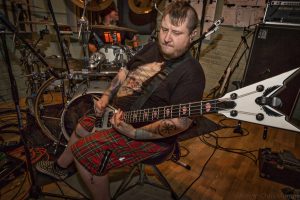 The bass recording ended up being a rather simple affair. Blothar had Fender Super Bassman with a direct out that he said he had good results with in the past. We tried it and the sound was big, fat and wooly. We all loved it and that direct output into the Distressor became the bass sound of the album, usually recording with Jamison Land’s (Beefcake the Mighty) signature bass from Dean or Bishop’s vintage Steinberger. I also took a clean Radial DI as a back-up, which I occasionally put into the mix as well.
The bass recording ended up being a rather simple affair. Blothar had Fender Super Bassman with a direct out that he said he had good results with in the past. We tried it and the sound was big, fat and wooly. We all loved it and that direct output into the Distressor became the bass sound of the album, usually recording with Jamison Land’s (Beefcake the Mighty) signature bass from Dean or Bishop’s vintage Steinberger. I also took a clean Radial DI as a back-up, which I occasionally put into the mix as well.
One of the challenges with the vocals on “The Blood of Gods” is that Michael Bishop has such a huge range as a vocalist – not only in terms of dynamics and the notes he can hit, but also in the styles. He can sound like several completely different singers, and as we were developing the songs, often in front of the mic, I had to be ready for anything. He was often developing different styles of singing to represent different characters in the songs. I brought my Pearlman TM-1 mic out from California for the task. It is a U47-ish style of tube mic that can sound so good on so many different styles of singing. Brent Purgason and Matt Maguire (Sawborg Destructo), who sang lead on a couple songs in a more punk-metal style, were recorded with a Shure SM7B. Lastly, one special guest vocalist on the album was M.C. Chris (of Aqua Teen Hunger Force fame) who I recorded at my studio in Southern California with a Shure KSM32.
Mixing and mastering took place at Veneto West, my studio in the mountains just north of L.A.
Mixing was done in Pro Tools with a fairly large amount of outboard gear for tone shaping. The lead vocal chain was an Empirical Labs Lil Freq for de-essing and subtractive EQ, into a Retro Instruments Double Wide for tone shaping compression into an Electrodyne 511 EQ for a little extra presence and, lastly, an Empirical Labs Distressor for final in your face smack! The final mix went through a Dramastic 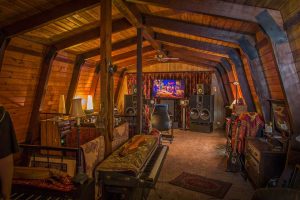 Audio Obsidian compressor and an A Designs Hammer2. In the box I relied heavily on subtractive EQ from the Brainworx bx_digital EQ for getting all the big sounds to work together and the Nvelope transient shaper from Elysia to get the punch and impact of modern rock drums while still trying to keep the tone and feel organic.
Audio Obsidian compressor and an A Designs Hammer2. In the box I relied heavily on subtractive EQ from the Brainworx bx_digital EQ for getting all the big sounds to work together and the Nvelope transient shaper from Elysia to get the punch and impact of modern rock drums while still trying to keep the tone and feel organic.
Veneto West is set up in a way that it can be reconfigured when I shift from mixing to mastering. Both the mix position and my primary two buss rack are on wheels. I mix on Yamaha NS-10s near the front of the control room. When I am shifting to mastering, the listening position rolls back about 10 feet and I master on a pair of custom 3-way mastering speakers from F.A.R. in Belgium. This allows me to work in the optimum position for each task and this ensures that for albums where I am mixing and mastering, I get some of the advantages of mastering in a different space.
Creating “The Blood of Gods: was a struggle. We set high standards for ourselves and averaged about 14 hours a day in the studio, 7 days a week over a couple months trying to meet them. In the end it was worth every minute. I am really proud of the album. It honors the band’s past and the friends and players that we lost and moves the band forward. The album has been very well received and debuted in the Billboard Top 50. Gwar lives!
Ronan Chris Murphy
Get the album from Metal Blade here metalblade.com/gwar/
Ronan Chris Murphy – Producer/mixer/mastering – has diverse credits ranging from Prog-Rock legends King Crimson to YouTube sensation Tay Zonday to shock rockers GWAR and everything in between, including Tony Levin, Steve Morse, Terry Bozzio, Alexia, Martin Sexton, Ulver, Jamie Walters, Steve Stevens and Nels Cline. His productions have charted as far away as Iceland, Greece and Malaysia. He also works on music for non-album projects including the hit Norwegian film Uno and video games Mafia III and Assassin’s Creed Brotherhood. He is the founder of Recording Boot Camp, which helped pioneer the recording intensive concept and has launched an online training series.
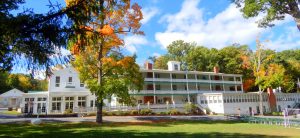 Mountain Recording Retreat: May 6-11, 2018
Mountain Recording Retreat: May 6-11, 2018
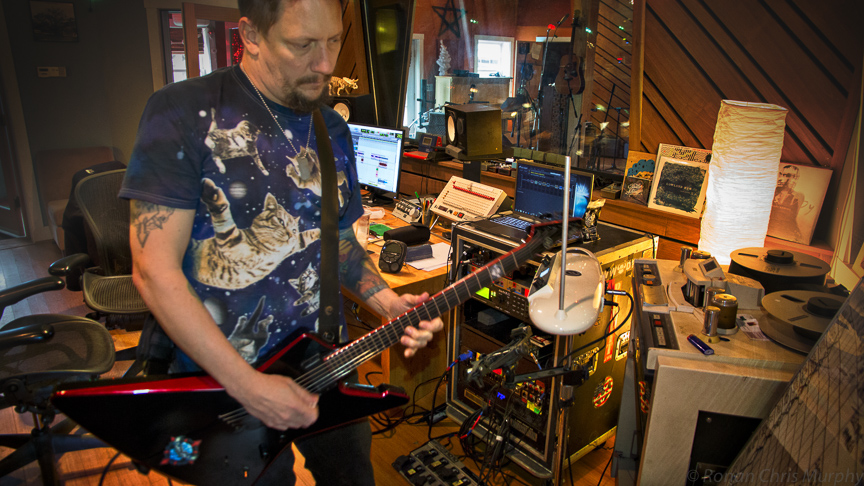
 T
T





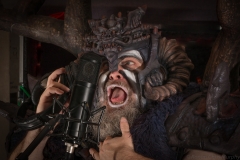
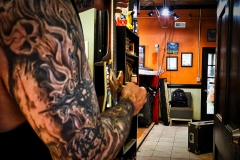
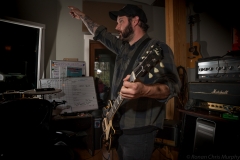
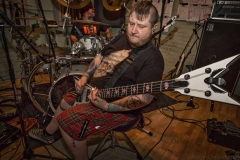
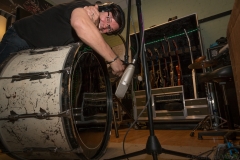
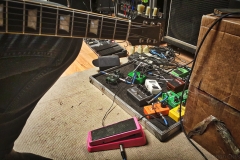
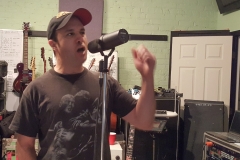
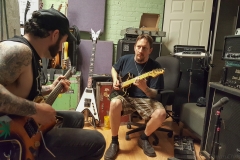
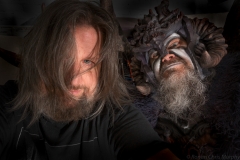
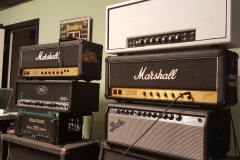
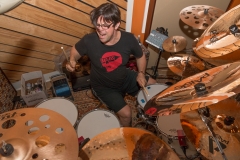
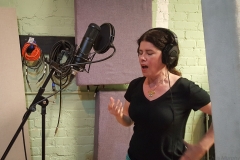
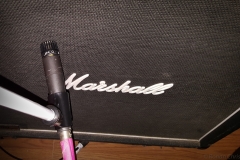
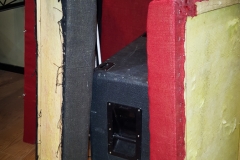
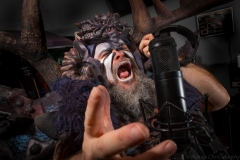
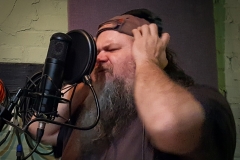
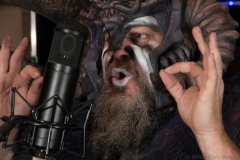
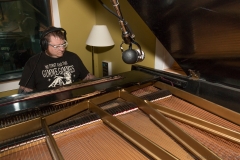
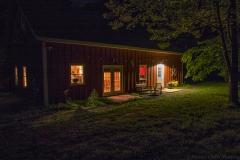
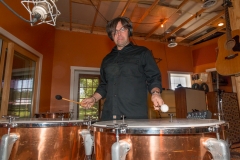
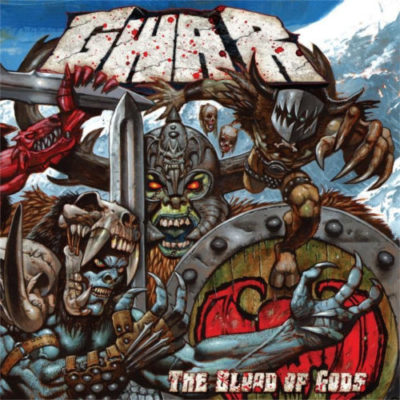
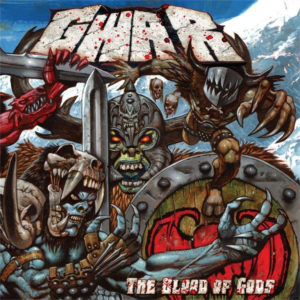
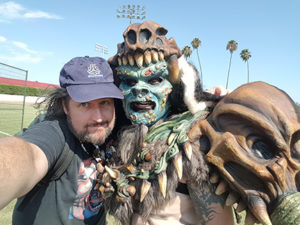
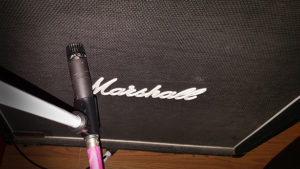
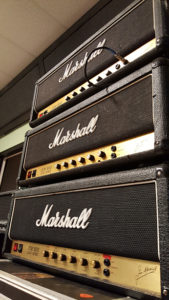
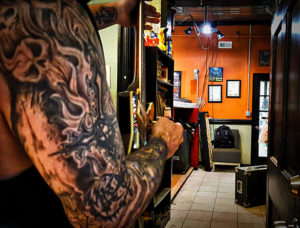
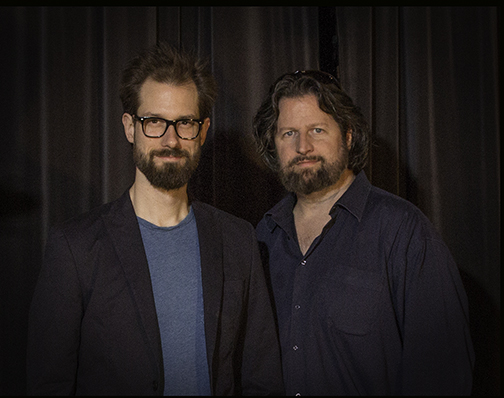
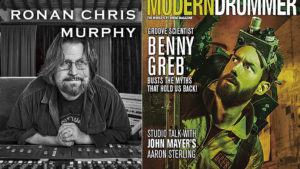
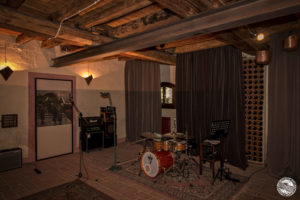
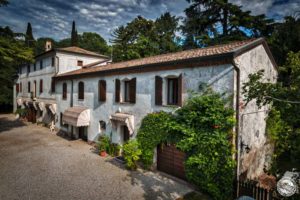
 Let me give you a quick primer in case you need to get caught up on the conversation. Unlike analog recording, digital audio cannot record a continuous stream of information. Digital audio take a series of digital “snap shots” of an audio wave form that is then stored (and usually manipulated) in our digital recorders. On playback the digital audio system can convert or reassemble those snap shots back into an analog wave form that is remarkably similar to what was recorded. When you buy a CD (you still buy those, right?) the sample rate is 44.1k, meaning that the audio is made up of 44,100 of these digital snap shots. If you rent a DVD of a new Hollywood blockbuster, the sample rate for the audio will be 48k, or 48,000 of these snap shots.
Let me give you a quick primer in case you need to get caught up on the conversation. Unlike analog recording, digital audio cannot record a continuous stream of information. Digital audio take a series of digital “snap shots” of an audio wave form that is then stored (and usually manipulated) in our digital recorders. On playback the digital audio system can convert or reassemble those snap shots back into an analog wave form that is remarkably similar to what was recorded. When you buy a CD (you still buy those, right?) the sample rate is 44.1k, meaning that the audio is made up of 44,100 of these digital snap shots. If you rent a DVD of a new Hollywood blockbuster, the sample rate for the audio will be 48k, or 48,000 of these snap shots.



